…AND THEN ALL BECAME WHITE! E DOPO ACCADDE IL BIANCO
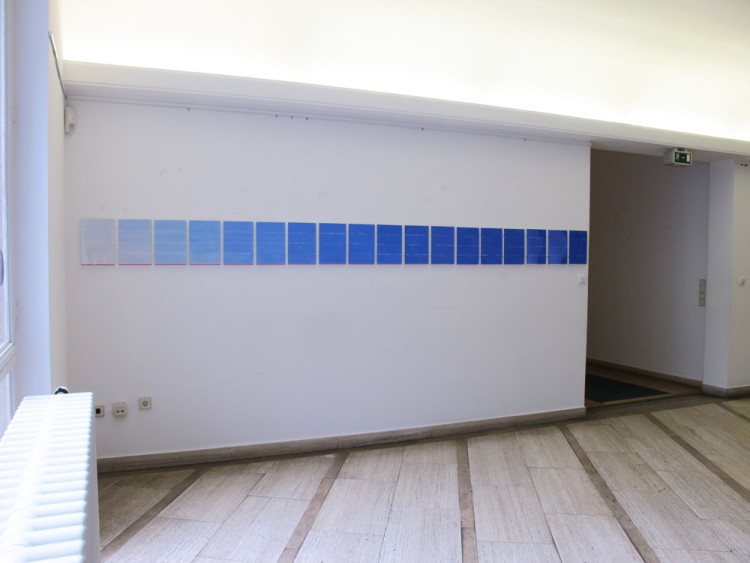
Understanding is not a problem of time and space:
it depends on the maturity of the mind.
What does it matter if one lives in the East or in the West?
Ramana Maharshi
Text by Vittoria Biasi
… and then All became white!
Leonardo da Vinci, with his anatomical study of bodies and natural elements, brought together within particular laws, introduces a process for knowledge of human laws relating to the order of nature, to access a higher system. His Treatise on Painting is an expression of the formal and unitary experience of the world analysed. This world is a screen for and holder of values which paved the way for technology and provide an introduction to the perception of systems. The link between the artistic sign and the heart is in the observation and contemplation of the rule. The attention within contemporary art on the natural world is not a search for a refuge in the era of globalised fear: it is the response to the search for another rule for understanding, acceptance and integration within a higher system, selected humbly.
The world of nature in the poetics of Valentina Colella is a declaration of a narrative strategy referring to ghosts, and to heroes, which, removed from all temporal projections, become free in the mental space, imitating aerial space. The artist starts her history by photographing meshes for cages and structures for windows, as a moment of reflection on the idea of opposition which accompanies man’s life and seems to be “inscribed within the constitution of the world”. The art of seeing or feeling has been crystallised within the relationship with life’s feelings and her works are a recognition of this.
In her exhibition “Attese impossibili [Impossible Waiting]” Valentina Colella embarks upon a comparison with the dualism of the soul and how it can be overcome. The artist combines the remote place, where absence has occurred, with the vision of a bird flying in the portion of sky visible from the window in her room. The bird is the visible element linking real life and virtual space. As a vector of the profound, its expressive possibilities are in the repetition of its image itself which, focused on and enlarged gradually, fades away by becoming “white”.
The view of the disappearance is the conscience of what has not been experienced: it is il manque of a world, a project, it is the unattainable of the white innate in every culture.
The narration reveals the complementary nature of memory and desire. These become the polarities of the project “Awaiting my lucky star”, conceived as a ritual dialogue between earth and sky.
The “… e poi accadde il bianco […and then All became white]” project is a continuation of “Attese impossibili”. The artist takes up the themes left suspended, focuses on the flight which traces a spiral as if searching for a metaphysical thought. The focus here is on the conscience of the unfathomable profundity of the void, both physical and psychological, exorcised within the rite of repetition. The concept is expressed by making a monochromatic choice, with abundant use of the colour fuchsia (pale magenta).
Valentina Colella has worked on the profile of a bird, attaining unexpected analogies, and has carried out territorial analysis by identifying areas of observation preserved for the processes of environmental transformation and decay, which were the locations of the first relations with what surrounds us. It is as if there is within the artist a meeting of place and memory, whereby the work deals with an emotion which is now outside time, because it is beyond both past and present.
In “… e dopo accadde il bianco!”, Valentina Colella’s embarks upon a narrative which focuses on the buzzard, a bird found in Abruzzo and common in certain parts of Europe and Asia. The artist studies the buzzard’s behaviour, isolating certain realities which she analyses in a manner almost looking to possess its rules.
The worlds exist independently of the observer and those who try to penetrate their compositional structure, to deduce the rules as an emotion of extendible awareness, which can be used in other domains. These worlds are unaware of their own secrets and man rambles within the system like an unknown monad.
“Flight has captured my attention for a few years now”, writes Valentina Colella, “I approach it with a meticulous and ritual process. Working with the cutter on the page and removing the shape of the flight is like being close to the moment the wings pierce the air. Within my religious cutting work, I conquer the void which is a stage of flight, and I look at the full white page which is all that remains between my fingers. I prefer the suspension of the work because in the language of construction it is like looking for various levels of meditation.”
The organisation of flight here consists of complementary steps and catalogues within a dialogue with Leonardo da Vinci’s study. The reference is like a silent nod of confirmation in the view of the Maestro. It is also a witness to the contemporary thought of overcoming the idea of border, of attaining the “rhythmical, cyclical, dialectical nature of the original world” against “the power of the mind”, against “the rigid nature of the rules, standards and hierarchies of conventional thought, of artificial time, and of dogmatic religions, morals and ideologies”.
The artist isolates the buzzard from its habitat and assigns to it a heroic interpretation of time, following its moves, flights and representations. This takes on value as an extreme affirmation of liberty, of existence beyond all constrictions, in line with its own unattainable rule of identity.
The title of the exhibition arises from the conception of the work which aims to go above and beyond, to overcome a limit of the visible. The silhouettes engraved or painted within a deliberate ritual process develop the procedure horizontally and in depth through an imaginary invisible white meeting between man, bird and my lucky star. A new form of image is born from the experience of what is real: this is a philosophical principle of thought, of love, of pride, of oneself.
Vittoria Biasi – Art historian
![2016, Valentina Colella [po-ià-na] - VI intaglio su carta 61 pagine (collezione privata) ... e dopo accadde il bianco! a cura di Vittoria Biasi Ph: Luciano Onza](https://www.1fmediaproject.net/new/wp-content/uploads/2016/10/Valentina-Colella-po-la-na-VI-2016.jpg)
dipende dalla maturità della mente.
Che cosa importa se uno vive in Oriente o in Occidente?
Ramana Maharsi
Leonardo da Vinci, con lo studio anatomico dei corpi e degli elementi naturali, accomunati in particolari leggi, introduce un procedimento di conoscenza delle leggi umane in relazione all’ordine della natura per accedere ad un sistema superiore. Il Trattato della pittura è l’espressione dell’esperienza formale, unitaria del mondo analizzato. Questo mondo è schermo e portatore di valori che hanno aperto le vie della tecnologia e introducono alla percezione di sistemi. Il filo di congiunzione tra il cuore e il segno artistico è nell’osservazione, nella contemplazione della regola. L’attenzione, nell’arte contemporanea, verso il mondo naturale non è la ricerca di un rifugio nell’era della paura globalizzata: è la risposta alla ricerca di una regola altra per la comprensione, l’accettazione, l’integrazione in un sistema superiore, umilmente eletto.
Il mondo della natura nella poetica di Valentina Colella è una dichiarazione di percorso che rimanda a fantasmi, ad eroi, che, sottratti ad ogni proiezione temporale, realizzano la loro libertà nello spazio mentale, emulo di quello aereo. L’artista inizia la sua storia fotografando reti per gabbie, per finestre, come momento di riflessione sull’idea di opposizione che accompagna la vita dell’uomo e sembra “inscritto nella costituzione del mondo”. L’arte del vedere o del sentire si è sedimentata nella relazione con il sentimento della vita e le sue opere ne sono una ricognizione.
Nella mostra “Attese impossibili” Valentina Colella coniuga il luogo lontano, in cui è accaduta l’assenza, con la visione di un volo d’uccello nella porzione di cielo visibile dalla finestra della sua camera. Il volatile è l’elemento visibile di congiunzione tra vita reale e spazio virtuale. Quale vettore del profondo ha la sua possibilità espressiva nella ripetizione della sua stessa immagine, che, progressivamente focalizzata e ingrandita, si disperde divenendo “bianco”. La visione della scomparsa è la coscienza del non vissuto: è il manque di un mondo, di un progetto, è l’irraggiungibile del bianco proprio di ogni cultura.
La narrazione scopre la complementarietà tra memoria e desiderio. Questi divengono le polarità del progetto “Awaiting my lucky star” pensato come dialogo rituale tra terra e cielo. Lo sguardo su alcune delle precedenti opere consente di individuare un percorso compositivo che approda nella poetica di “… e poi accadde il bianco!”, proseguimento di “Attese impossibili”.
L’artista affronta i temi lasciati sospesi, si focalizza sul volo che traccia una traiettoria a spirale come nella ricerca di un pensiero metafisico.
Il centro della ricerca è la coscienza dell’insondabile profondità del vuoto, fisico e psicologico, esorcizzato nel rito della ripetizione. Il concetto è espresso seguendo una scelta monocromatica, con l’uso privilegiato del color fucsia (magenta pallido).
Valentina Colella ha lavorato sulla sagoma di un volatile, ricavando analogie inattese, e ha condotto un’analisi territoriale identificando aree di osservazione preservate ai procedimenti di trasformazione e di degrado ambientale, che sono stati i luoghi delle prime relazioni con il circostante. E’ come se nell’artista avviene un incontro tra il luogo e la memoria, per cui l’opera è un lavoro su un’emozione ormai fuori dal tempo, perché è oltre il passato e il presente.
In “… e dopo accadde il bianco!” Valentina Colella intraprende un percorso focalizzato sulla poiana, un volatile presente in Abruzzo, diffuso in alcune zone dell’Europa e dell’Asia. L’artista ne studia il comportamento, isolando alcune realtà che analizza quasi con il desiderio di possederne la regola. I mondi esistono indipendentemente dall’osservatore e da chi tenta di penetrarne la struttura compositiva, di dedurne le regole come emozione di conoscenza estendibile, utilizzabile in altri domini. Questi mondi sono ignari dei loro stessi segreti e l’uomo si aggira all’interno del sistema come monade sconosciuta.
“Il volo cattura la mia attenzione da alcuni anni, scrive Valentina Colella, mi accosto a lui con un procedimento meticoloso e rituale. Intervenire con il taglierino sul foglio e asportare la sagoma del volo è come essere vicina al momento in cui le ali fendono l’aria. Nel religioso lavoro d’intaglio conquisto il vuoto che è fase del volo, guardo il pieno e il bianco della pagina che è ciò che resta tra le mie dita. Preferisco la sospensione dell’opera perché nel linguaggio della costruzione è come cercare vari livelli di meditazione.”
L’organizzazione progettuale sul volo si compone di passaggi complementari, di catalogazioni in dialogo con lo studio di Leonardo da Vinci. Il riferimento è come un cenno di silenziosa conferma nello sguardo del maestro. E’ anche la testimonianza del pensiero contemporaneo di superare l’idea di confine, di raggiungere la “natura ritmica, ciclica, dialettica del mondo originale” contro “il potere della mente”, contro “la natura rigida delle regole, delle norme, delle gerarchie, del sapere convenzionale, del tempo artificiale, delle morali, delle ideologie e delle religioni dogmatiche”.
L’artista isola la poiana dal suo habitat e le affida l’interpretazione eroica del tempo, seguendola in successioni, voli, rappresentazioni. Questa assume la valenza dell’affermazione estrema di libertà, di esistenza oltre ogni costrizione, secondo la propria, imprendibile regola identitaria.
Il titolo della mostra scaturisce dalla concezione dell’opera che ha la finalità di raggiungere un oltre, di superare un limite del visibile. Le silhouette, intagliate o dipinte con il procedimento d’iterata ritualità, sviluppano il procedimento in orizzontalità e in profondità per un incontro immaginario invisibile, bianco tra uomo, volatile e my lucky star. Un nuovo immaginario nasce dall’esperienza del reale: questo è un principio filosofico di ricerca, di amore, di fierezza di sé.
Vittoria Biasi – Storica dell’arte
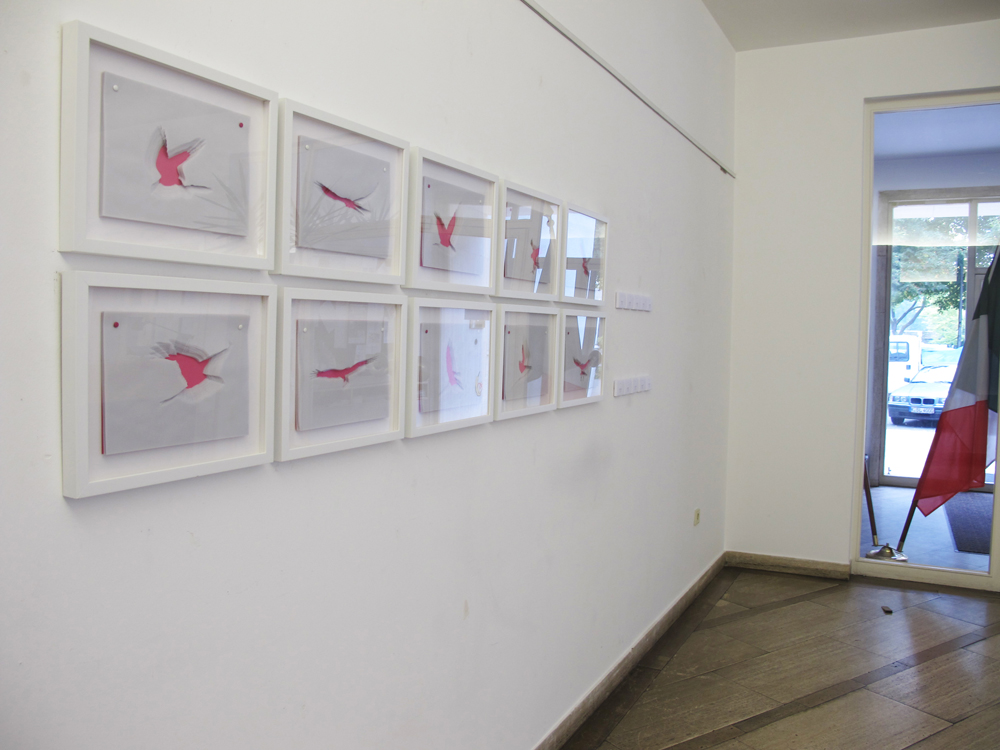

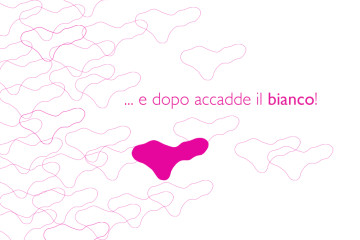
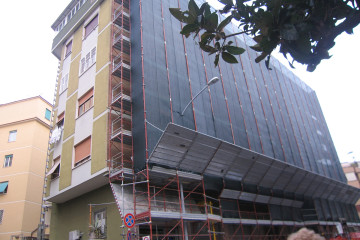
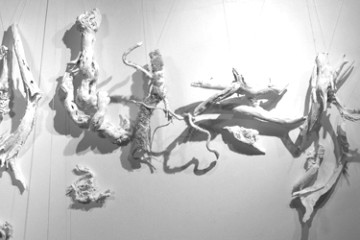


No Comment